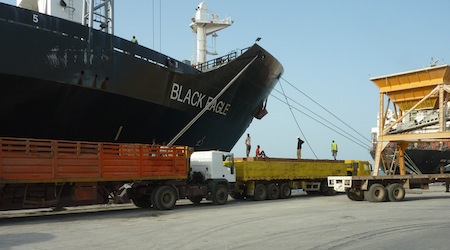Sujin Kim, Javed Singha
Partner: United Nations World Food Programme
The WFP’s transport of food aid to Ethiopia’s landlocked population is constrained by supply chain bottlenecks at the port, and limited availability of trucks for inland transport. How can the WFP supply chain be optimized to effectively operate within the given constraints? First, we assess Ethiopia’s current food transport capacity – a critical factor for the WFP’s ability to deliver humanitarian food aid. Specifically, we review the current and forecasted movement of goods, gather and analyze information on transport capacity versus demand, and address the impact of government policies and regulations on the road transport sector. As a result, our research helps the WFP in analyzing quantitative and qualitative factors used in selecting routes and mitigating port bottleneck issues. The results of our study may be used by the WFP and other humanitarian organizations which aid distressed populations.
For more about this publication, please visit the CTL publications database.

